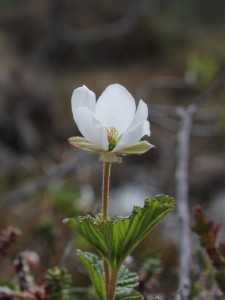Chemical composition of Nordic wild berries is unique because of the challenging, short growing season with abundant light and often high variations between night and day temperatures. Thus in the Nordic latitude significance of secondary compounds, such as phenolics in plants is emphasised, as these compounds are primary produced for plant defence in environmental stress conditions. Berries in the genus Rubus, especially cloudberry (R. chamaemorus) and arctic bramble (R. arcticus) are unique Nordic berries, and important raw material for food, beverage and cosmetic industry. However, these berry species are very sensitive towards changing climate, fluctuating temperatures, winds and rainfalls, and right timing for pollination, and therefore the Nordic climate strongly affects the annual yield and quality of their crop. These berry species are also sensitive towards plant pathogens and pests. Moreover, effective modern soil and forest cultivation techniques are harmful to the growth of the arctic bramble and have also resulted in a reduction of its natural habitat.
Cloudberry and arctic bramble are extremely rich in polyphenolic ellagitannins (ETs), which belong to the group of hydrolysable tannins (HTs). Plant phenolics often possess various bioactivities, thus being beneficial not only for plant, but also for human health. The pathway of ET biosynthesis in berries is so far poorly investigated. This project proposal aims to characterise and increase biodiversity of ETs in cloudberry and arctic bramble, and to understand the molecular mechanisms that regulate their synthesis, using biotechnological methods with unique berry cell cultures as research tools. This information can be exploited in development of berry varieties more tolerant against climate change and plant pathogens, and to offer new potential ellagitannin compounds for nutritional and medical research. In the future, biotechnological production of valuable therapeutic or fine aroma compounds of these two rare berry species is also a very exciting approach. Although this study focus on Nordic berry species, our results in general may benefit also cultivation and exploitation of other globally economically important Rubus –berries, such as red raspberry, blackberry and boysenberry (Rubus spp.; hybrid of red raspberry, blackberry and loganberry R. × loganobaccus) and also strawberry (genus Fragaria) which is rich in ellagitannins.
The BerryTannin project is funded by the Academy of Finland (2014-2018) and led by Dr Riitta Puupponen-Pimiä (VTT Technical Research Centre of Finland). At the University of Turku the project is coordinated by prof. Juha-Pekka Salminen and it supports one PhD student (MSc Jussi Suvanto).

